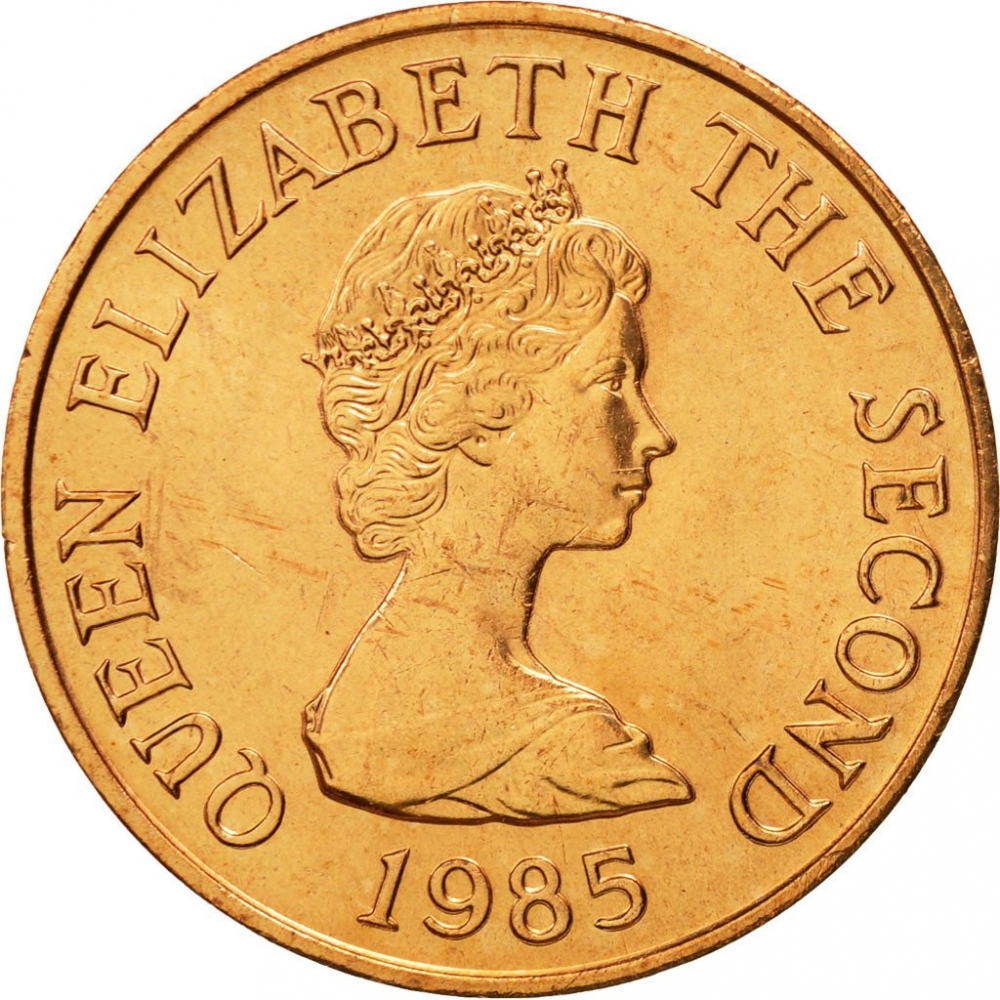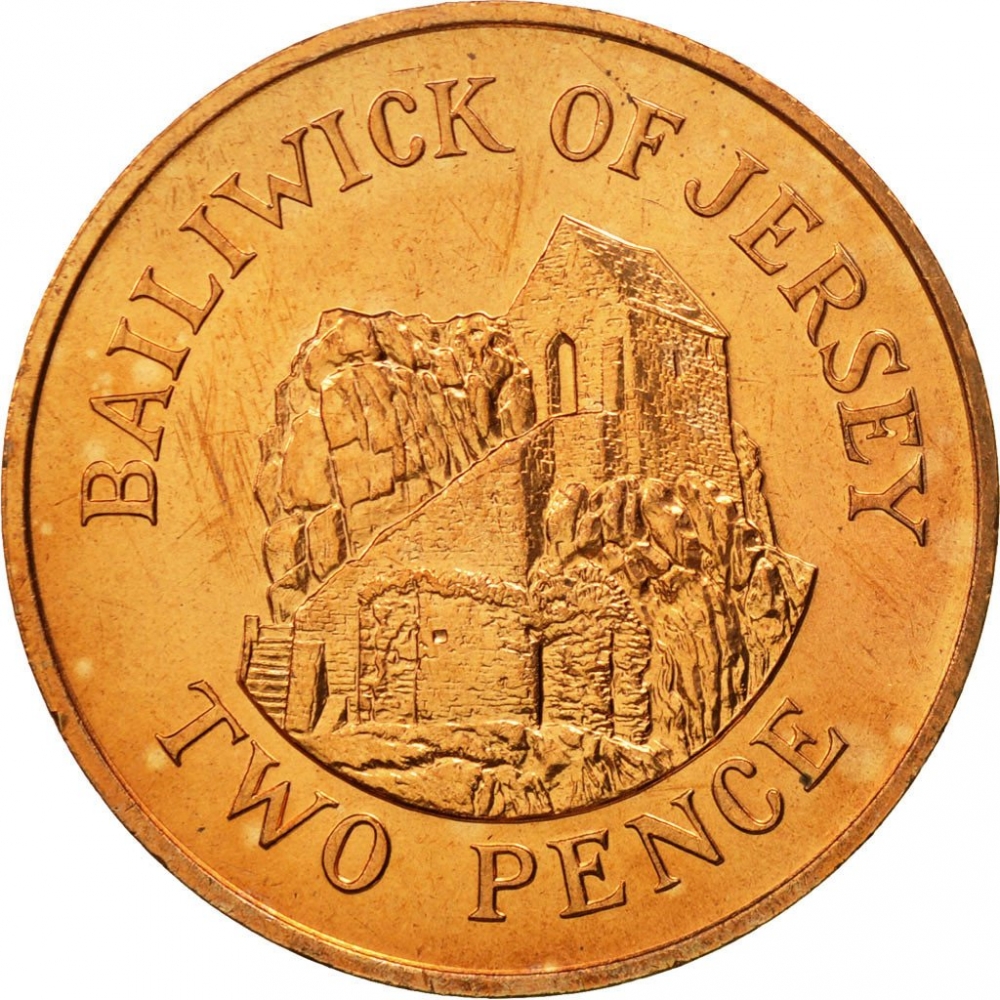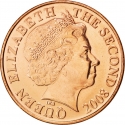Description
Jersey, officially the Bailiwick of Jersey, is a Crown dependency of the United Kingdom, ruled by the Crown in right of Jersey, off the coast of Normandy, France. Jersey was part of the Duchy of Normandy, whose dukes went on to become kings of England from 1066. After Normandy was lost by the kings of England in the 13th century, and the ducal title surrendered to France, Jersey and the other Channel Islands remained attached to the English crown.
Jersey is a self-governing parliamentary democracy under a constitutional monarchy, with its own financial, legal and judicial systems, and the power of self-determination. The Lieutenant Governor on the island is the personal representative of the Queen.
Obverse

|
Second crowned portrait of HM Queen Elizabeth II facing right, wearing the Girls of Great Britain and Ireland tiara.
The Girls of Great Britain and Ireland tiara was a wedding present in 1947 from her grandmother, Queen Mary, who received it as a gift from the Girls of Great Britain and Ireland in 1893 on the occasion of her marriage to the Duke of York, later George V. Made by E. Wolfe & Co., it was purchased from Garrard & Co. by a committee organised by Lady Eve Greville. In 1914, Mary adapted the tiara to take 13 diamonds in place of the large oriental pearls surmounting the tiara. At first, Elizabeth wore the tiara without its base and pearls but the base was reattached in 1969. The Girls of Great Britain and Ireland Tiara is one of Elizabeth's most recognisable pieces of jewellery due to its widespread use on British banknotes and coinage.
Engraver: Arnold Machin
QUEEN ELIZABETH THE SECOND
1985
|
Reverse

|
Depicts the Hermitage of St. Helier, denomination below.
Saint Helier (died 555 AD) was a 6th-century ascetic hermit. He is the patron saint of Jersey in the Channel Islands, and in particular of the town and parish of Saint Helier, the island's capital. He is also invoked as a healing saint for diseases of the skin and eyes.
Helier's wanderings led him to Jersey where he found a small community of fishermen on the sand dunes where the modern town of St. Helier was to develop. Helier settled on a tidal islet, nowadays known as the Hermitage Rock. From his vantage point on his rock, Helier could see the sails of approaching attackers and would signal to the shore, whereupon the inhabitants would scatter into the surrounding marshes, thereby frustrating the attackers’ bloodlust.
The story is that he was eventually martyred by marauding pirates who beheaded him with an axe – hence the crossed axes on the parish crest. Though Helier starved himself to ascetic weakness for 13 years, legend holds that he had the strength, when he was beheaded by attackers, to pick up his head and walk to shore. According to the hagiography, Romard discovered Helier's body on the beach still clutching his head in his hands, placed it in a boat and set off for the mainland. The boat, guided by the hand of God, arrived at Bréville-sur-mer (Manche) where a reputedly miraculous healing spring arose on the spot where Helier's body rested overnight.
A medieval chapel was constructed over "St. Helier's Bed", the hollow in the rock where Helier sheltered. The Hermitage rock is the focus of the annual pilgrimage.
Engraver: Robert Lowe
BAILIWICK OF JERSEY
TWO PENCE
|
| Edge |
|
Characteristics
| Material |
Bronze |
| Weight |
7.1 g |
| Diameter |
25.91 mm |
| Thickness |
- |
| Shape |
 round
round
|
| Alignment |
Medal
|
| Mint |
Royal Mint
|
Related coins
4th portrait
Copper Plated Steel, 7.1 g, ⌀ 25.91 mm
My Collection
My Exchange
|





